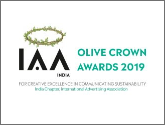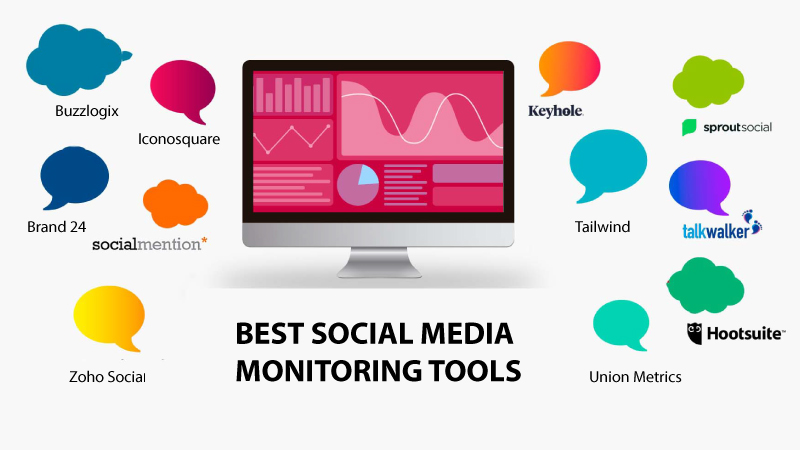Email Marketing For Your Real Estate Business
Posted: February 7, 2020 | Author: Shruti Jani

Email marketing and social media marketing are 2 of the most popular channels within inbound marketing. In this blog, we will discuss strategies for email marketing for real estate businesses and social media marketing for real estate businesses.
The blog talks about how to go about executing your email and social strategies, the thought processes behind it, and the best practices you need to follow.
Without further ado, let us start discussing email marketing after which we will be elaborating on social media.
Email Marketing

Email marketing is one of the most personal ways to get in touch with the end consumer in a digital ecosystem. With emails dropping right into a customer's inbox, there is a high chance they will interact with the email if the topic or subject line interests them.
The biggest challenge doesn't lie in sending the email, but in getting the audience, timing, and context right, which is why a watertight inbound strategy is essential for email marketing for real estate businesses.
Here we discuss the right way to approach your customer through email marketing, and what is the right strategy for it before you start writing your email? While you're writing it is, and after you've sent your email.
Before You Write The Email
One may think that the responsibilities of email marketing start once the emails reach the customers' inbox - This is a common misconception. Email Marketing and its best practices begin much before the email is opened or sent even. Here are two strategic points you should make sure are in place before you start off writing your mailer or sending it.
1. Have A Thorough Content Inventory
What does email marketing essentially do? It talks about a piece of content in a brief and attention-grabbing format. It is supposed to make a customer click and direct them to a landing page where they can find more elaboration on the information that was in the email.
So, before you send an emailer about your brand, make sure you have a thorough inventory of blogs, videos, content offers, brochures etc. Following are the reasons why a well-established content inventory will help your strategy:
- To Aid The Consumer's Research:
If one blog has interested a customer, they might likely look for more content pieces or await more information from you. If they do not have more content to look at they might exit the website and not give your real estate brand a second thought.
- To Be Consistent With Emails:
Also, to be consistent with your emailers, you first need to create an inventory of helpful and reliable content - This is to make sure that there is no break in your sending schedule, and your brand doesn't escape the consumers' mind.
Finally, make sure that all the content pieces in your inventory adhere to SEO guidelines, follow basic publishing hygiene and are designed in a user-friendly format. It is recommended to have updates on these small details done and out of your way before crafting the email.
2. Keep Building On Your Contact List
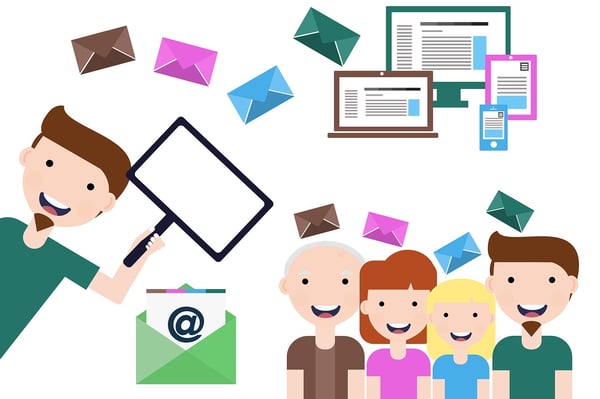
This is next on the agenda before you start writing your emailers.
It's an undeniable fact that building a receptive audience is essential. However, email IDs are privileged information and can be used in an inbound strategy only if the customer has knowingly given you their ID and permitted you to use it. Which is why building a contact list for emailers might be a challenging task.
A strategic way to get around this is to make sure there is an enquiry form at every possible touchpoint, where customers can fill in their email and contact details.
These touchpoints can be the website homepage, Facebook forms, landing pages of Google Search ads, or at the end of blogs. Not only online, but offline also you can build an emailer list through a visitor's book at the site office or keeping tab of visitors when holding promotions or events.
Making sure that new people are consistently being added to your list is a foolproof way to reach new leads.
Related Post: B2B Email Marketing Strategy: Steps to Follow
When You're Writing The Email:
Now, once you have gotten your content inventory and audience in place, comes the time to actually build your email. Here are steps you should make sure you're following while executing your email strategy.
1. Keep It Short & Simple
We may think that the more information we provide in one email, the more helpful it is to the customer. But email marketing is a little trickier than that. It is finding a delicate balance between giving your customer information and making sure they are not overwhelmed with text.
The best way to retain consumer interest, especially in bland subjects like real estate, is to write short, quippy, and to-the-point emails.
Write short paragraphs that just pique enough curiosity for them to click on the email or fulfil the desired action. A good trick is to step into the shoes of the receiver. If this particular email pops into your inbox on a busy day, would you like to read long paragraphs or would you want something concise?
When a reader sees paragraphs on paragraphs, they may get overwhelmed and exit without consuming anything about your real estate company at all. It is best to keep it brief.
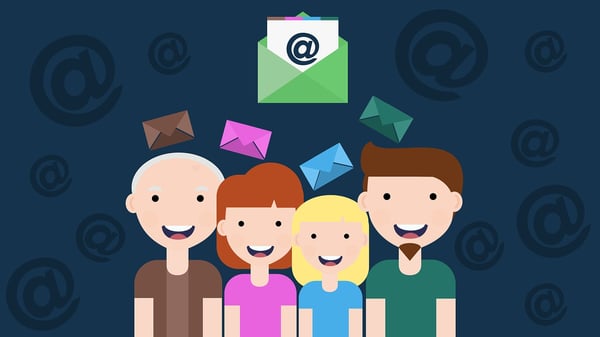
2. Encapsulate Your Content With Attractive Imagery
Now when you're designing your emailer, make sure it is a user-friendly and attractive design. Use your brand's colours to increase brand recall and highlight clickable links.
On top of that, make sure to use 1-2 relevant pictures within the design of the email, not only to make it look more attractive but also to give context to your reader. You can use project renders, actual site work photographs, or sample flat photos.
Images do so much more than making a piece of content look colorful. They serve as a visual guide to the emailer content, and if a reader is just skimming the text, images can help them not lose out on valuable information.
3. Have A Relevant Subject Line & Preview Text
Now the final step while writing your email is to write your Subject Line and Preview Text. These are two lines that can make or break the reception and open rates of your emailer. 47%of recipients decide whether to open or discard emails based exclusively on the subject line.
It is particularly tough to write Subject Lines and Preview texts due to the stringent character limit. However, practice is what makes perfect.
A simple practice is to do A/B testing with subject lines. Always make the two lines starkly different from each other and see what works best with that audience. For example, for a Diwali discount offer emailer; you may test these lines:
Subject Line A: Savings Of 7 Lacs* On Your New Home This Diwali!
Subject Line B: Looking For Your Diwali Bonus? Here Is One Worth 7 Lacs*!
While the first subject line is objective and to-the-point, the second one has more emotion ingrained into it while bypassing the topic of "offer" altogether.
You can't be certain that one will work better than the other until you test them. Testing subject lines is essentially guaranteed feedback on what style of writing works for what type of audience.
After You've Sent Your Email
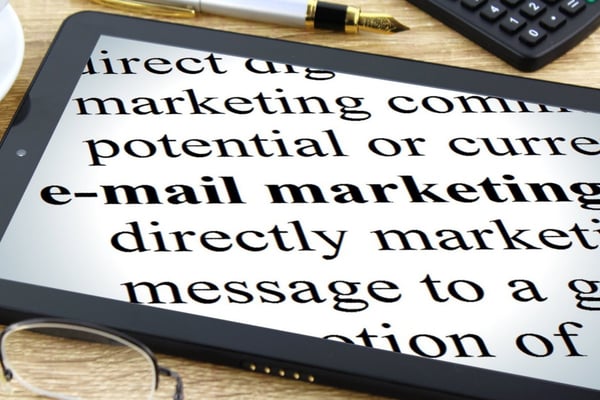
Now once the email has been written, comes the time to gauge performance on the email.
Here are a few essential metrics you should keep track of once executing email marketing for real estate businesses.
- Open Rate:
Number of emails opened compared to the total amount delivered
- Click-Through Rate:
Number of clicks on the links contained in an email message
- Unique Clicks and Unique Open Rate:
single users who have opened or clicked at least once
- Click-to-open rate (CTOR):
number of clicks with respect to the number of openings
- Bounce Rate:
percentage of email addresses that returned an error after being sent
Of course, depending on the goal of the email, you may keep track of different metrics.
But apart from these metrics, there are two key actions you need to undertake while executing your email strategy:
1. Score Leads
Since the process of buying a home is long term, it may be challenging to keep track of where the lead is in their buying journey - This is where lead scoring helps.
Lead scoring is essentially a technique where you can score a lead (generally from 0 to 100) depending on how close the lead is to purchase an apartment from your company.
Scoring each lead helps the marketer understand whether a lead is in the awareness stage, consideration stage, or decision stage. Depending on their buying journey a lead may be a "cold" lead- meaning they are not yet close to buying a home or a "hot" lead- meaning they are very close to the final touchpoint.
2. Nurturing
Now, once each lead is scored, it is time to provide them with content that will inch them further towards the final conversion - This is called a nurturing strategy.
It is the process of giving content, that is relevant to each lead, depending on their position in the buyer's journey.
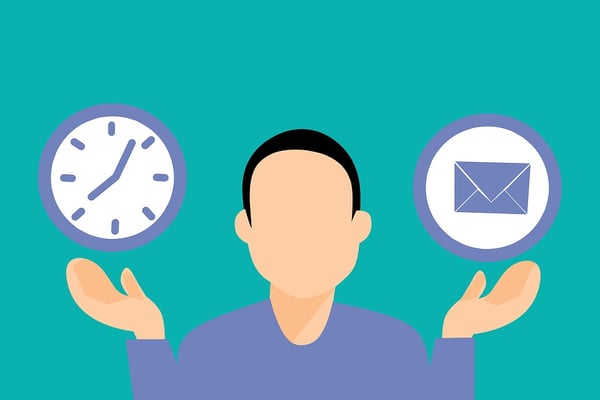
For example,
There is a lead who is interested in buying a home. They are still in the awareness stage i.e. they just know the name of the brand and its general messaging; nothing more. To transition them from awareness stage to consideration stage there needs to be a specific email strategy. Thus an email sent to them should talk about the attractive RoI a certain property provides, the amenities over there, or the connectivity of the neighborhood.
These are aspects that push a lead to consider your property over others.
Similarly, if someone is in the consideration stage but they are on the edge of making a decision they can be given emailer with a discount offer. This discount can be the final push they need towards buying the home.
Sending a decision stage email to someone in the awareness stage leads to wrong messaging to the wrong lead. It is very important to be mindful of each lead, their position, and nurture their buyer’s journey.
If you would liked in-depth email marketing, you can get in touch with our team by filling in the form below!
Explore more advertising and marketing blogs here: https://seagulladvertising.com/blog


